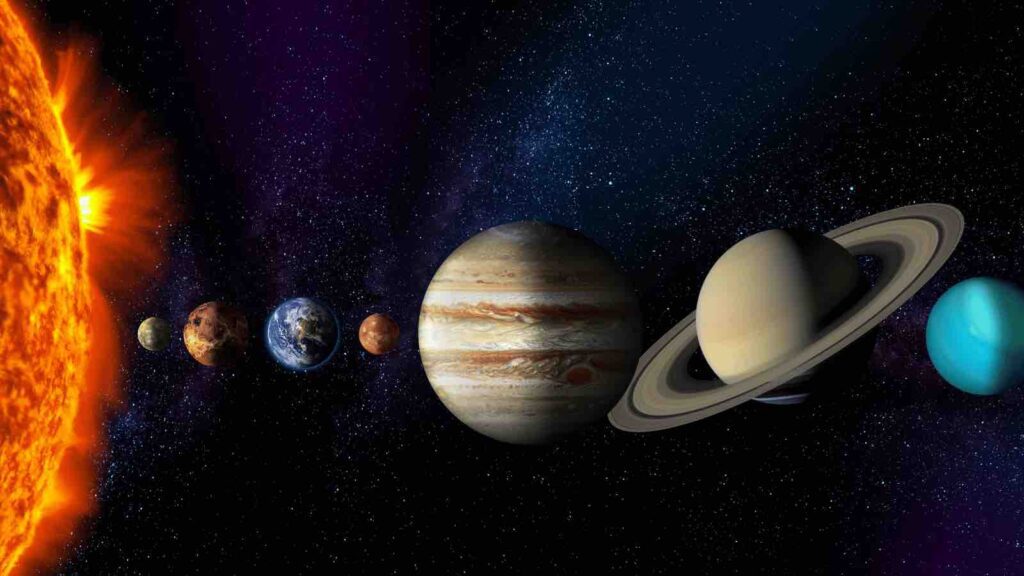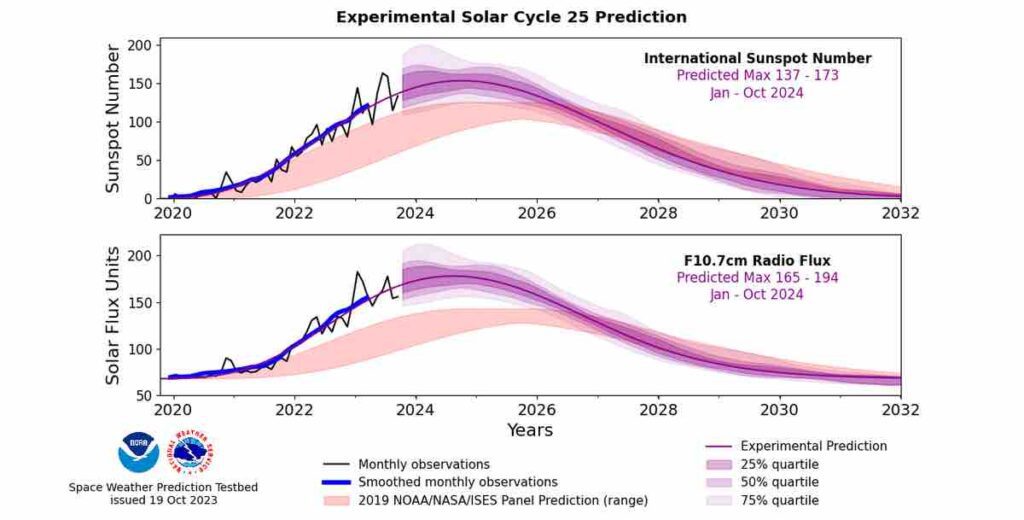he revised forecast for Solar Cycle 25 highlights the intricate relationship between solar activity and Earth’s technological and natural environments.
The year 2024 marks a significant turning point in solar activity as the Space Weather Prediction Center (SWPC) at NOAA predicts an earlier, stronger, and longer-lasting peak for Solar Cycle 25. This new forecast, indicating a peak in solar activity between January and October 2024, represents a notable shift from previous estimates.
RELEVANT SUSTAINABLE GOALS



Understanding Solar Cycle 25
Solar cycles, approximately 11-year periods of fluctuating solar activity, are driven by the sun’s magnetic field and characterized by the frequency and intensity of sunspots on the solar surface. The upcoming peak, known as the solar maximum, is now expected to reach higher levels of activity with a sunspot number between 137 and 173. This prediction emerges from the SWPC’s experimental Updated Solar Cycle Prediction Product, which utilizes historical sunspot records, advanced statistics, and solar dynamo models.
Mark Miesch, a solar scientist at NOAA, highlights the importance of this revision: “Our new experimental forecast will be much more accurate than the 2019 panel prediction and will be continuously updated monthly as new data becomes available.” This update is particularly exciting for eclipse enthusiasts, as the total solar eclipse on April 8, 2024, will align with the solar maximum, offering a unique celestial spectacle.
Solar Activity and Earth’s Magnetosphere
Solar activity, including solar flares and coronal mass ejections (CMEs), can significantly impact Earth. Geomagnetic storms triggered by such plasma outbursts can affect electrical grids, GPS signals, satellites, and pose radiation risks to airline workers and astronauts. Advanced warning of space weather events is crucial for implementing protective measures.
During solar events, Earth’s magnetosphere, our protective magnetic “bubble,” repels harmful energy and traps it in the Van Allen radiation belts. However, during intense space weather events, more common at solar maximum, the magnetosphere can be disturbed, leading to potential radio and power blackouts, as happened in Quebec in 1989.
Auroras: A Spectacular Side Effect
Not all interactions between solar activity and the magnetosphere are destructive. One beautiful byproduct is the auroras, known as the northern lights (aurora borealis) in the Northern Hemisphere and the southern lights (aurora australis) in the Southern Hemisphere. Triggered by energetic particles colliding with atmospheric gases, auroras are a breathtaking display of nature’s power.
The revised forecast for Solar Cycle 25 highlights the intricate relationship between solar activity and Earth’s technological and natural environments. Accurate predictions are key to preparing for potential impacts and for enthusiasts to witness nature’s grand displays. As we approach the peak of Solar Cycle 25, understanding and monitoring these cosmic forces become more critical than ever.
Lead image courtesy of Sun and the planets of the Solar system by Alberto Sava’s Images
You may also be interested in :
A Degree Of Concern : The Climate Crisis Is One Of Environmental Justice




